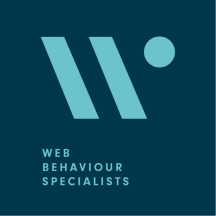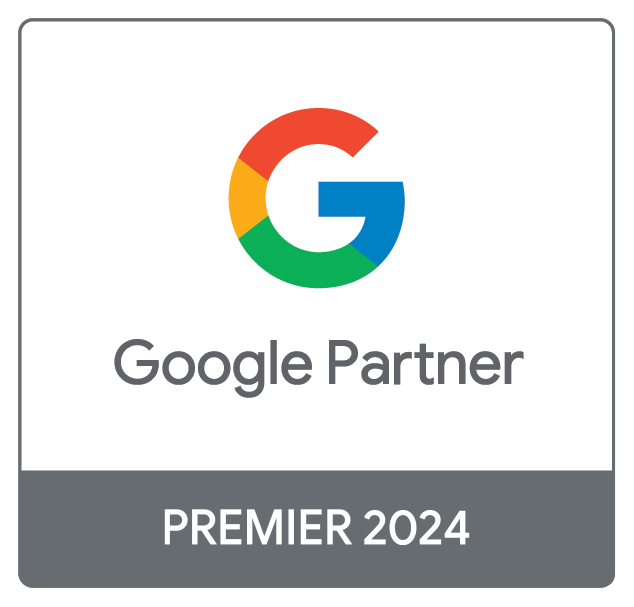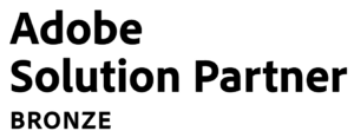Today’s healthcare consumer, both patients and healthcare professionals, is very different to the healthcare consumer of the past. Today’s patients and healthcare professionals are able to do extensive research online. They are far more particular about the services they receive or the products they use. It’s also important to remember that carers have become an active party in the research phase. Engaging in the digital marketing area when looking for health related information.
As 8 out of 10 people turn to search engines as their first source for health information. It’s crucial to be visible online when they are looking for information. A healthcare content strategy is an essential tactic to include in your healthcare marketing strategy. It allows you to educate your target audience through engaging, relevant and informative content.
Forward-thinking pharma, medical device, and hospital systems providers are already investing in content marketing. But there’s a lot of room for differentiation and sophistication within healthcare provider marketing programs and content marketing strategies.
So, what are the most important elements of a successful healthcare content marketing strategy?
Keep your goals in mind
As with any other strategy, you want to be clear on your goals from the start. Do you need to drive traffic to the website? Are you trying to raise awareness about a condition? Do you need to promote a new clinic? Use your goals to help you to create a content plan. Then craft your strategy to help the right consumers find the right content at the right time.
Develop a plan
 All great things start with a plan – including content marketing strategies. Documenting your content marketing strategy helps you set a baseline for success. Who are your key audiences? Which topics do you want to own as thought leaders? Which initiatives are you supporting with content? On which platforms are you sharing your content? These are just a few of the questions that go into establishing a content strategy. Documenting your strategy allows you to share it with the marketing team or hospital organisation to explain the goals of your program. It also lets you know when it’s time to change. Is your organisation launching a new cancer treatment program? Consider making space in your strategy to support it and drive patients to it.
All great things start with a plan – including content marketing strategies. Documenting your content marketing strategy helps you set a baseline for success. Who are your key audiences? Which topics do you want to own as thought leaders? Which initiatives are you supporting with content? On which platforms are you sharing your content? These are just a few of the questions that go into establishing a content strategy. Documenting your strategy allows you to share it with the marketing team or hospital organisation to explain the goals of your program. It also lets you know when it’s time to change. Is your organisation launching a new cancer treatment program? Consider making space in your strategy to support it and drive patients to it.
Content distribution plan
It’s not enough to create content on a regular basis but you also need a content distribution plan. To prepare a plan you need to pick the audience your content is targeting, pick a stage in the customer journey your content targets (awareness, consideration, purchase, etc.). Pick channels that resonate with that audience at that stage in the cycle. For example, blogs and infographics work well for social media. Special offers work well with email marketing or PPC ads.
Understand your audience
This is the base for any marketing activity in any sector, and it’s no different in healthcare. You have a greater chance of reaching and influencing your potential audience by being there when they are looking for information. In the case of patients, this could include moments like:
– What’s wrong with me moments – more and more consumers are asking the internet what’s wrong with them. Do you have abdominal pain? What could cause sudden sniffles? To catch patients in these want-to-know moments you need to have the answers to their questions on your site.
– Where can I get treatment moments – “near me” searches for health-related services have doubled since 2015. It means that it’s crucial to have online visibility when someone searches for local services.
– Who can I trust moments – after the initial “near me” research for places that offer the right services, consumers typically start more in-depth research for a practitioner. It’s crucial to have trust-building content like testimonials, introduction videos, patient stories, etc.
– I’m ready to book moments – While most patients choose their healthcare provider carefully, they don’t have that much patience when it comes to booking an appointment. Because of this, your booking process should be as quick and simple as possible.
Create content for different stages of the customer journey
Create content that offers relevant solutions and is helpful for your users in each stage of the customer journey. If you want a customer to convert (e.g. schedule an appointment or call you) make sure that your landing pages and content offer more value, actionable advice or offers to encourage them to e.g. fill the form with their contact details.
Establish yourself as a thought leader
There is a lot of information available online around health-related topics,  so having a blog section on your website gives you the opportunity to engage your customers in new ways as an authoritative resource.Establishing and maintaining your reputation as a quality healthcare company or provider is critically important when creating any form of content. By creating content about the latest advances in your field or the most up-to-date information helps demonstrate your company’s knowledge, training, expertise as well as reflecting your professionalism.
so having a blog section on your website gives you the opportunity to engage your customers in new ways as an authoritative resource.Establishing and maintaining your reputation as a quality healthcare company or provider is critically important when creating any form of content. By creating content about the latest advances in your field or the most up-to-date information helps demonstrate your company’s knowledge, training, expertise as well as reflecting your professionalism.
Humanise your brand
One of the biggest benefits of content marketing is that it allows you to humanise your brand. It’s especially important in the healthcare industry where organisations need to be able to connect with their patients on a person-to-person level. Humanising your brand also means that your content should be approachable, with examples your audience will understand. Another method of humanising your brand is to use your employees as brand advocates.
Email marketing plan
Email marketing is considered one of the most effective ways to convey your message to your audience. With email marketing, you can work to build trust with potential patients as well as current customers. Types of emails to produce might include blog posts, appointment reminders, latest health news, announcements about the latest technology, patient stories, etc. And be sure not to forget personalisation – by segmenting your email list, you can create separate lists of patients with similar interests or concerns. This allows you to send more targeted and relevant content to your email subscribers. The more relevance and value you can provide, the more likely readers will be to come to you when they need help. Emails can also make a positive impact on patient retention and customer service. You can use emails to remind patients of appointments or send important documents that they need to fill out before their appointment. This simple convenience can go a long way in keeping your patients happy and, thus, getting them to come back.
Types of emails to produce might include blog posts, appointment reminders, latest health news, announcements about the latest technology, patient stories, etc. And be sure not to forget personalisation – by segmenting your email list, you can create separate lists of patients with similar interests or concerns. This allows you to send more targeted and relevant content to your email subscribers. The more relevance and value you can provide, the more likely readers will be to come to you when they need help. Emails can also make a positive impact on patient retention and customer service. You can use emails to remind patients of appointments or send important documents that they need to fill out before their appointment. This simple convenience can go a long way in keeping your patients happy and, thus, getting them to come back.
Leverage social media
Healthcare, like most industries, is going digital and social networks have become an important health resource for both patients and carers as well as healthcare professionals. A social media strategy in the healthcare industry in no longer optional, it’s a requirement. With the right strategy, social media will be a powerful tool to build trust, reach more patients & HCPs and spread valuable medical information.
Read our article on 7 effective social media strategies for healthcare brands
SEO
When working on a content strategy for your healthcare brand, you can’t forget about SEO and your website rankings. As more and more patients, carers and healthcare professionals are starting their search for healthcare facilities, treatment solutions, etc. online, reaching patients on search engines is vital to any healthcare practice.
• 89% of consumers turn to a search engine when looking for answers to their healthcare queries
• 83% of patients visit a hospital’s website before booking a treatment or procedure
To rank well organically in the search results, you must establish and promote yourself as the medical authority in your market as well as produce highly relevant, optimised content. In order to get your healthcare company to the top of search results, your website needs to be optimised for SEO. You need content driven by your patients’ wants and needs, you need to target the right healthcare industry keywords, you need to get other authoritative and relevant websites to link to, etc.
Don’t forget about paid ads
As the top of the search results page is dominated by paid ads, especially on mobile, they could and should be an integral part of your marketing strategy. Read how SEO and PPC work well together.
Compliance
Being in the healthcare industry we can’t, of course, forget that there are rules and regulations that have to be taken into account. Each piece of content, be that product pages, blog posts, explainer videos or paid ads, has to go through a validation process in order to ensure that the message is fully in line with current regulations.
Tracking and measurement
Make sure that every piece of content you create is benchmarked against a single goal, e.g. promoting treatment options for obesity or driving signups for a webinar for healthcare professionals. Without setting up goals and measurements, you won’t be able to prove the value of your content marketing efforts or calculate the ROI. Collecting data about your content will help you see the topics your audience is most interested in, the most effective forms of content (e.g. blog posts, infographics, webinars, etc.) and identify gaps in your content strategy.
Types of content for the healthcare content marketing strategy
A content marketing strategy needs to be consistent, in terms of the content that you’re producing as well as how often you’re producing it. If you cannot commit to weekly, bi-weekly or monthly posting of content on your site, you will most likely never get the desired results.
Your healthcare content marketing strategy should include several types of content to be really effective. Don’t forget that your content will only work if it’s relevant and useful to your audience.
Data-driven articles
Use data to support any claims you make. This will help convince new and existing patients to trust you and your methods, and it may even persuade them to purchase something.
Case studies and patient focused content
Use case studies to demonstrate how effective your product is and offer real-life examples of your product/solution/service in action.
FAQ page
Try to answer all the important and common questions. This is an easy way to provide relevant, useful content in a format that’s easy to find. Answering questions is also a great way to start a content strategy for healthcare brands i.e. the questions you get asked the most will typically correlate to the questions your potential clients are googling. These Q&As can be used in various formats i.e. video, whitepapers, etc.
Videos
People prefer to watch visual content rather than reading text and it’s no different for the healthcare sector. That’s why every modern pharma marketing campaign is based on visual info. Video is one of the best ways to visualise the message. Types of video content to produce can include website welcome videos, patient reviews, procedure and treatment overviews, educational videos on commonly asked questions or medical conditions, etc.
Infographics
These visually-rich, compelling images are a great way to present information to an audience. Healthcare audiences respond particularly well to infographics as they cut through complex medical jargon and quickly deliver the facts they need to know.
Check out Top 6 Digital Marketing Challenges in Healthcare
Creating a content marketing strategy for healthcare is not easy but is definitely worth the effort. You need to understand what your audience is looking for, what questions they’re asking, what their common problems are as well as find the channels they’re active on. Don’t forget to check what type of content your competitors are providing. So you can see what makes you different and how to best highlight it in your content.
Now you know which tactics will help you reach and engage potential patients. It’s time to develop your healthcare marketing strategy. Don’t forget, quality and consistency are the key factors to a successful content marketing strategy.









